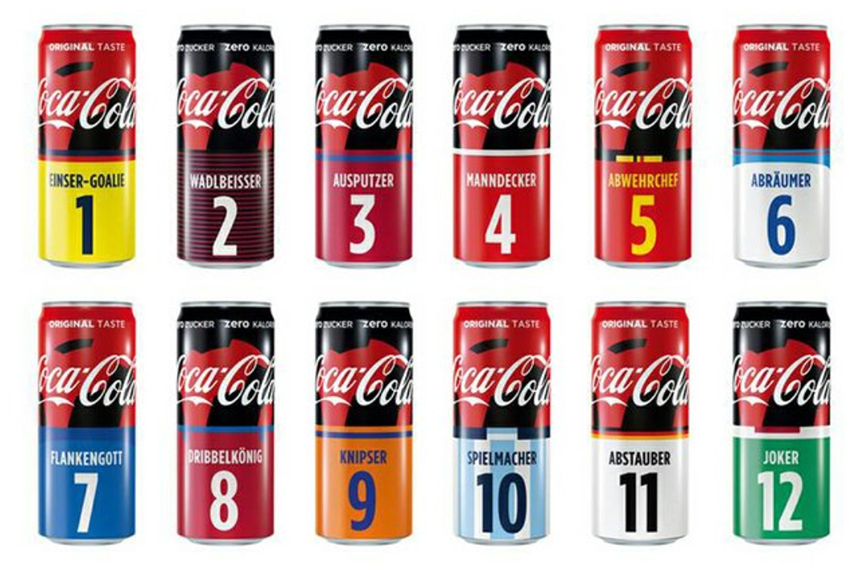Sport Sponsorship: An excellent opportunity to connect with your audience
With the FIFA World Cup reaching its conclusion, we felt it was the right time to have a fresh view on what’s happening in the world of Sports Sponsorships, particularly as it relates to the beverage can industry and football. We interviewed Shaun Whatling from the agency Red Mandarin, based in the United Kingdom. They don’t create or sell sports sponsorships, but position themselves as a neutral adviser to big brands looking to get the most out of their sponsorship budget.
How does Red Mandarin fit in to the world of sports sponsorship?

Shaun Whatling: We’re pretty unique in that we neither sell nor promote sports sponsorship, but instead offer impartial, objective advice to businesses that might want to sponsor an event. Our aim is to ensure that their investment is as effective as possible given that they’re faced with sales and production teams who are only interested in generating spend. As a result, we provide a range of analytic and strategic services to help answer the big questions like: is it a good use of investment? How can we optimise our investments? How do we choose a sponsorship which is going to support our objectives as accurately as possible and how do we measure this, etc., etc.
Fewer local brands, more international brands
These are good questions for any business, but especially so for a sponsorship related expenditure that so often, from the outside at least, seems to be based on emotion and therefore rather unaccountable.
Shaun Whatling: If you go back 20-30 years, sports sponsorship were more domestic in scope because it was all about trying to generate top of mind awareness. There were lots of brands that were strong in one market but far fewer international brands. With consolidation, and big brewers like AB InBev and Heineken owning a large brand portfolio of beers, sponsorship has become more sophisticated because it’s being deployed to meet more sophisticated ends.

Budweiser, one of the offcial sponsors of the World Cup 2018 in Russia launched an all-red can and an innovative aluminium bottle that shows off the logo of the World Cup. Read more?
An intimate connection with consumers
Is this an approach used by all brands when it comes to sponsorship of football?
Shaun Whatling: It varies from brand to brand depending on where they’re at, and that, in a way, is the beauty of sponsorship. It’s not so much a kind of discipline; it’s more an approach to marketing. As in how do we get close to our consumers? How do we talk to them through channels and on a subject that is close to their hearts? How do we stop just having a sales conversation and create a conversation in which we’ve become more of a partner in their life and their lifestyle?

A global player like Coca-Cola launches local campaigns, even during global events. Read more?
Cans can be very effective at extending reach
You often hear the notion that a sponsoring investment is only half the cost, and that you need to spend still more to ensure the sponsorship delivers. Is this true?
Shaun Whatling: The benchmark for sponsorship can only be based on the people who are aware of the brand and the sponsorship, because it’s with them that you’ll have a chance to build consideration and familiarity to drive sales, and to push specific brand attributes. Now cans can be very effective at that… especially if you’re able to personalise or individualise them around the consumer, or if you’re able to use the packaging to reflect the sponsorship in a way that is creative.
Be part of the excitement RouletteBull
It’s seems that sponsorship really comes down to being in the moment with your audience, and going beyond just the 90 minutes of the game.
Shaun Whatling: Yes, sponsorship works on several different levels. It works through TV exposure: there’s plenty of evidence to show that repeated exposure to logos no matter whether it’s conscious or unconscious, provides associations between the brand and the event. Neuroscience shows that there are much deeper and more latent connections between the brand and a sport that can’t be measured through conscious processes.
It also works by demonstrating relevance … after all every brand needs to show that it’s in the here and now. Sponsorship’s very good at that because sports events can be exceptionally engaging … and the other thing it’s very good at is suggesting a sense of stature. On an unconscious level, sponsorship communicates that you’re a big, global business, because you are part of a major global event.
Curious how brands used the World Cup in Russia to create amazing campaigns?
Here are some of the best can branding cases this summer.
Tips on how to score big time with sports sponsorship
1. Get the fit right
Sponsor events that have a synergy with your brand. This means looking at the heritage of the event, the profile of its fanbase, and yours too, and any legacy associations with previous drinks sponsors, which might be hard to shake off.
2. Negotiate the best deal
The World Cup and Olympics are not the only games in town and you don’t have to have a huge budget to make sport work for your brand. Consider niche events that are less expensive but that can also deliver significant results to your particular audiences.
3. Do your own thing
This is an approach that has been used by brands such as Red Bull. They have become a brand phenomenon in sponsorship by creating their own events, such as the Red Bull Air Race that perfectly reinforces its “Gives You Wings” marketing.
4. Build excitement
Use cans and packaging to engage with consumers and grow anticipation in the weeks and months leading up to the event.
5. Make the most of the can
It’s a unique canvas for you to clearly articulate your brand’s association with an event. Special themed designs are able to create a strong link between consumer, brand and event and may even become collectors’ items in their own right.
6. Be imaginative
Create integrated media campaigns to support the sponsorship and drive retail sales.
7. Go social
Maximise your use of social media to engage consumers around the event. You could, for example, invite high-profile athletes to tweet and supply other content that links the brand to the event.
8. Work with retailers
Develop competitions with tickets and VIP event access as the major prizes. Provide enticing point-of-sale materials and marketing toolkits that can be used even by community retailers.
--
Metal Packaging Europe gives Europe’s rigid metal packaging industry a unified voice, by bringing together manufacturers, suppliers, and national associations. We proactively position and support the positive attributes and image of metal packaging through joint marketing, environmental and technical initiatives.
Stay up to date with more insights and subscribe to our mailing list >>